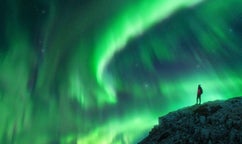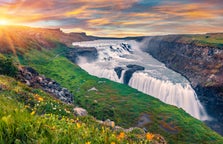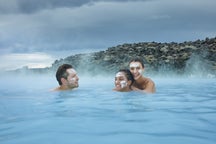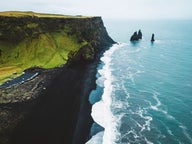The Reykjanes Peninsula, located about an hour’s drive south of Reykjavik, was long somewhat neglected by travelers despite its many attractions. It is, of course, famous for its geothermal areas Gunnuhver, Seltún-Krýsuvík, and the Blue Lagoon. Since March 2021, however, the peninsula has become known for its volcanic eruptions. Since December 2023 alone, there have been seven eruptions, making a total of nine eruptions since 2021.

On March 19, 2021, at 8:46 PM, the national broadcaster reported an eruption at Fagradalsfjall. What happened next, I hadn’t expected: It seemed like every Icelander got into their car and drove towards the eruption site. So, I also set out. Honestly, I had never seen so many cars on the road to Keflavík before. Icelanders love their natural phenomena, and if there’s something to see, they go there. While I was still in the car, the first pictures began appearing on social media. The national broadcaster RÚV streamed the eruption live via webcam. (If something happens, you can watch it here: www.ruv.is, www.mlb.is, www.visir.is, and also on YouTube.) That night, I only made it as far as Grindavík, found a quiet spot, and marveled at the fiery red sky with the jagged mountains silhouetted against it.
 The eruption at Fagradalsfjall, specifically a fissure eruption, was the first eruption on the peninsula in nearly 800 years. The last eruption before that lasted 30 years and occurred between 1210 and 1240. There are a total of four active volcanic systems here: The Reykjanes system, including the central volcanoes Gunnuhver and Svartsengi; Krýsuvík, with the central volcano Trölladyngja; Brennisteinsfjöll; and Hengill. Some scientists even speak of six volcanic systems.
The eruption at Fagradalsfjall, specifically a fissure eruption, was the first eruption on the peninsula in nearly 800 years. The last eruption before that lasted 30 years and occurred between 1210 and 1240. There are a total of four active volcanic systems here: The Reykjanes system, including the central volcanoes Gunnuhver and Svartsengi; Krýsuvík, with the central volcano Trölladyngja; Brennisteinsfjöll; and Hengill. Some scientists even speak of six volcanic systems.
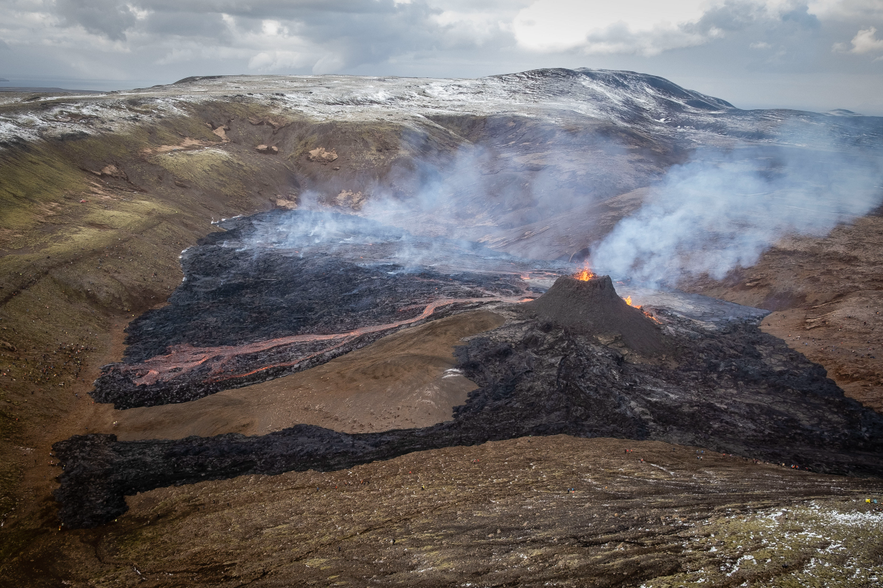 The other two eruptions were also fissure eruptions. From a volcano’s perspective, these are relatively calm events and therefore well-suited for observation. Explosive eruptions, on the other hand, would be an entirely different matter—and you wouldn’t want to be anywhere near one. The Fagradalsfjall eruption was almost tailor-made for tourists. The conditions were excellent for observing this fascinating natural phenomenon from a safe distance. Hiking trails to the eruption site were quickly prepared. The second eruption, however, was no longer “so friendly.” It posed a significant threat to the town of Grindavík, which ultimately had to be evacuated. (As of late October 2024, the town had been reopened to the public. However, with the current eruption, it has been evacuated again and is currently inaccessible. Update: Traffic into the city was allowed again with restrictions.)
The other two eruptions were also fissure eruptions. From a volcano’s perspective, these are relatively calm events and therefore well-suited for observation. Explosive eruptions, on the other hand, would be an entirely different matter—and you wouldn’t want to be anywhere near one. The Fagradalsfjall eruption was almost tailor-made for tourists. The conditions were excellent for observing this fascinating natural phenomenon from a safe distance. Hiking trails to the eruption site were quickly prepared. The second eruption, however, was no longer “so friendly.” It posed a significant threat to the town of Grindavík, which ultimately had to be evacuated. (As of late October 2024, the town had been reopened to the public. However, with the current eruption, it has been evacuated again and is currently inaccessible. Update: Traffic into the city was allowed again with restrictions.)

Earthquakes prior to the eruption caused damage to buildings and infrastructure, and the lava reached residential areas. During the penultimate eruption, the threat from lava was even greater. That eruption was difficult to access, and the area was not opened to the public. Nearby roads were damaged by the advancing lava. The small town of Grindavík faced a serious threat of destruction. A nearby power plant was also at risk, which could have had significant consequences for the electricity supply of the entire peninsula. The Blue Lagoon (and is closed due to the current eruption) had to close and may close again if another eruption is imminent or occurring. Barriers were constructed to redirect or halt the lava flow, which barely succeeded before the eruption subsided. Currently, these barriers are being reinforced.
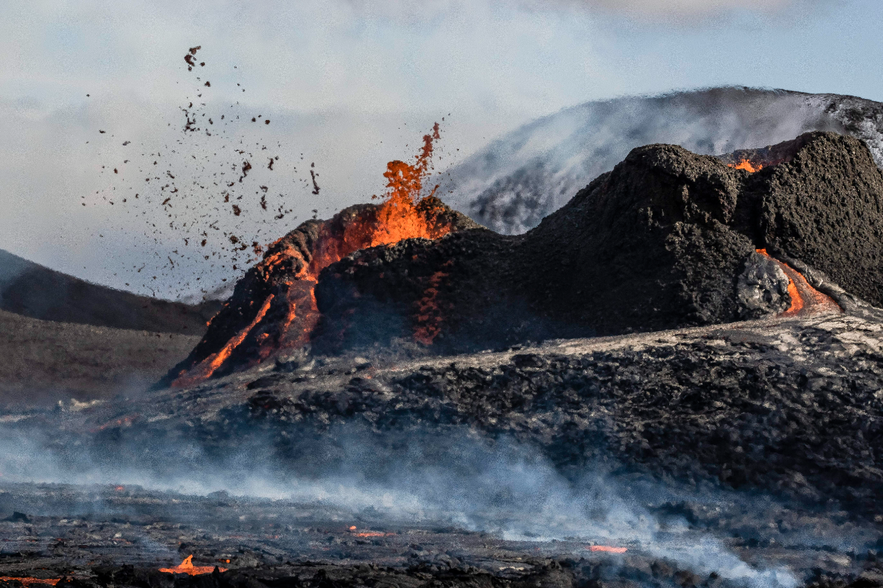 Before eruptions, there are usually a series of earthquakes, mostly swarms of low magnitude but sometimes stronger quakes. A live earthquake map is available on the website of the Icelandic Meteorological Institute. Generally, there is no need to worry much about the earthquakes; Icelanders have lived with them for centuries, and buildings are designed to withstand quakes of up to magnitude 7. However, when an earthquake swarm begins, it’s wise to secure loose items, such as those on balconies or shelves. If you’re out and about, be aware of the possibility of rockfalls or landslides on slopes, as well as sudden road damage. Exercise caution while driving. (Curiously, the current eruption was preceded by little seismic activity, making it very surprising. Scientists suspect that the entire eruption pattern may have changed.)
Before eruptions, there are usually a series of earthquakes, mostly swarms of low magnitude but sometimes stronger quakes. A live earthquake map is available on the website of the Icelandic Meteorological Institute. Generally, there is no need to worry much about the earthquakes; Icelanders have lived with them for centuries, and buildings are designed to withstand quakes of up to magnitude 7. However, when an earthquake swarm begins, it’s wise to secure loose items, such as those on balconies or shelves. If you’re out and about, be aware of the possibility of rockfalls or landslides on slopes, as well as sudden road damage. Exercise caution while driving. (Curiously, the current eruption was preceded by little seismic activity, making it very surprising. Scientists suspect that the entire eruption pattern may have changed.)
The penultimate eruption ended exactly two days before I arrived back in Iceland. It was a shame because I had been looking forward to experiencing such an event again. Reaching the vicinity of the Sundhnúkur crater is not possible as there are no safe hiking trails. However, even from a respectable distance, the eruption could be well observed. There’s usually an elevated spot you can hike to in order to safely watch an eruption.
For the latest information about eruptions, warnings, closures, and access to sites and attractions, check: https://www.visitreykjanes.is/en/volcano-eruption/eruption-news. The land continues to rise, magma continues to flow into the magma tunnel, and more eruptions are likely in the future. Scientists are closely monitoring the area.
If you’re planning to visit the area around Grindavík and the eruption sites, make sure to check HERE which roads are passable and which are closed. Repairs to damaged roads are still ongoing. A portion of the new road was built on or through fresh lava, so leaving the road is not advisable. Fresh lava is very unstable. For those planning to explore the area, guided tours are highly recommended. Scenic flights by airplane or helicopter are also an excellent way to view the fresh craters and lava. If it’s deemed safe, flights over active eruptions are sometimes offered.
If there’s an imminent threat from a potential eruption, warnings will be sent via SMS in the affected areas. Please follow the instructions of authorities and local rescue teams.
Dangers You May Face
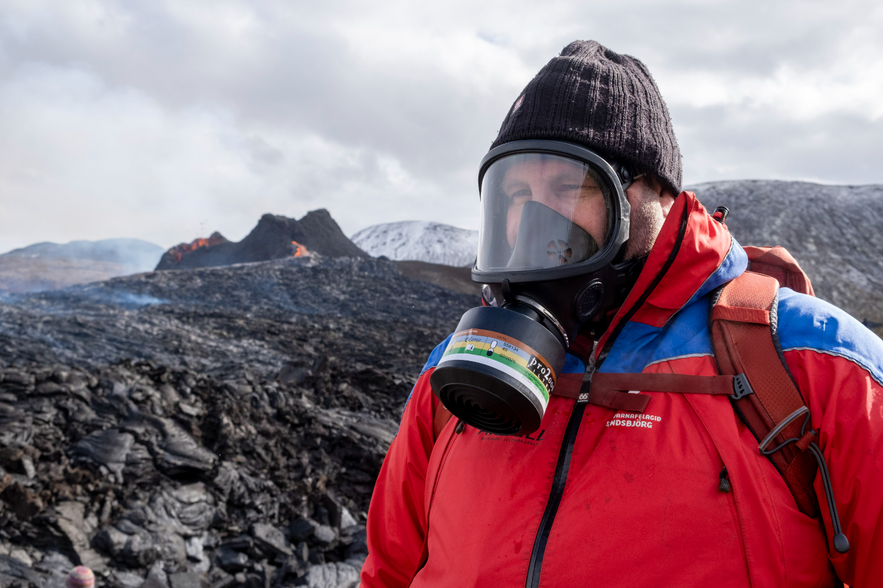 Anyone planning to visit a "friendly" eruption site should keep several things in mind. First and foremost, make sure the area has been officially cleared for public access. Stay within designated zones and do not wander off. Sturdy footwear and weatherproof clothing are essential. Carrying some snacks is highly recommended. Hikes to eruptions in remote areas can be long and exhausting, so take it slow. Always remember that Iceland's weather can change rapidly, and visitors often overestimate their physical capabilities. Ensure your phone is charged and switched on, familiarize yourself with the area beforehand, and check the weather forecast.
Anyone planning to visit a "friendly" eruption site should keep several things in mind. First and foremost, make sure the area has been officially cleared for public access. Stay within designated zones and do not wander off. Sturdy footwear and weatherproof clothing are essential. Carrying some snacks is highly recommended. Hikes to eruptions in remote areas can be long and exhausting, so take it slow. Always remember that Iceland's weather can change rapidly, and visitors often overestimate their physical capabilities. Ensure your phone is charged and switched on, familiarize yourself with the area beforehand, and check the weather forecast.
In addition to the obvious dangers—like bubbling lava reaching up to 1200°C being ejected from the crater—there are less apparent risks. (It's worth noting that volcanic eruptions may appear less threatening in photographs, but standing in front of one drastically alters your sense of scale, revealing the immense power of such an event.) Lava can be hurled hundreds of meters into the air. Keep in mind that eruption activity can change unpredictably at any time. Maintain a safe distance, as even a small lava bomb can be deadly.
Unpredictable events, like new fissures opening elsewhere, have occurred before. Lava flows, which may appear solid, can be unstable. Never step on hardened lava, as it is brittle and may conceal material underneath that is not only lethally hot but still molten. This danger can persist for a long time, even after an eruption has officially ended. Rain falling on fresh lava may create dense steam clouds that can be hot and hazardous.
In active eruption zones, hardened lava can unpredictably break open again, releasing fresh molten rock. While this is an incredibly fascinating sight, it’s best enjoyed from a safe distance.
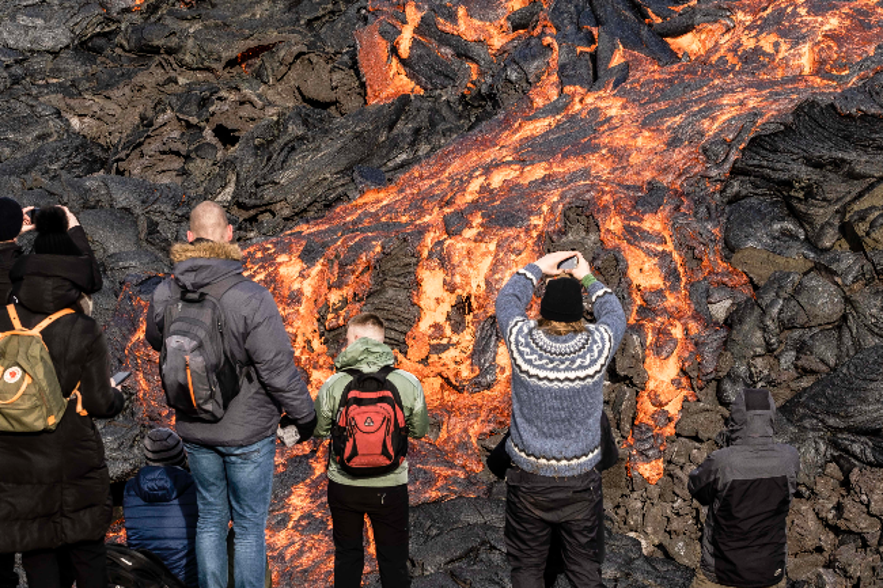
Toxic Gases
Another underestimated danger is the toxic gases released during eruptions, which can occur not only at the eruption site but also in nearby areas. The composition of these gases varies depending on the type of volcano and magma, but common gases include:
- Water Vapor: When hot lava contacts water, it evaporates explosively, creating large steam clouds. These "lahar clouds" can be extremely hot and dangerous, causing severe burns and respiratory problems, such as when lava flows into the sea.
- Carbon Monoxide: A colorless, odorless toxic gas heavier than air, it can accumulate in low-lying areas. Symptoms of mild carbon monoxide poisoning include headaches, shortness of breath, lethargy, visual disturbances, and nausea. Severe exposure can be fatal.
- Carbon Dioxide: A greenhouse gas heavier than air, it is also odorless with a slightly sour taste. Mild exposure can cause nausea, headaches, and dizziness, while high concentrations may lead to respiratory arrest.
- Sulfur Dioxide: This gas reacts with atmospheric water to form sulfuric acid, which can cause acid rain and respiratory damage. Inhalation of humid air during contact between lava and water can lead to significant respiratory injuries or burns in higher concentrations. Sulfur dioxide is heavier than air and tends to accumulate near the ground.
- Hydrogen Sulfide: A toxic gas causing nausea, vomiting, and dizziness, and at higher concentrations, paralysis and death. Unlike some other gases, it has a distinct rotten-egg smell, making it detectable at lower concentrations. Many visitors to Iceland are already familiar with its smell from shower water, though at harmless levels. This gas is slightly heavier than air.
- Hydrogen Fluoride: A corrosive gas that irritates the skin, eyes, and respiratory system and can cause severe burns.
- Hydrogen Chloride: A colorless gas with a pungent smell, it is highly acidic and corrosive, reacting with water to form hydrochloric acid.
Dust and Ash
In addition to gases, volcanic eruptions can produce high levels of dust and ash. Wearing a dust mask and protective goggles is strongly recommended. For prolonged or close exposure, or if necessary to remain near an eruption, equip yourself with a respirator with suitable filters (available as combination filters for the most common volcanic gases, except carbon monoxide) and a gas detector. Note that wearing masks can significantly increase physical strain, which should not be underestimated.
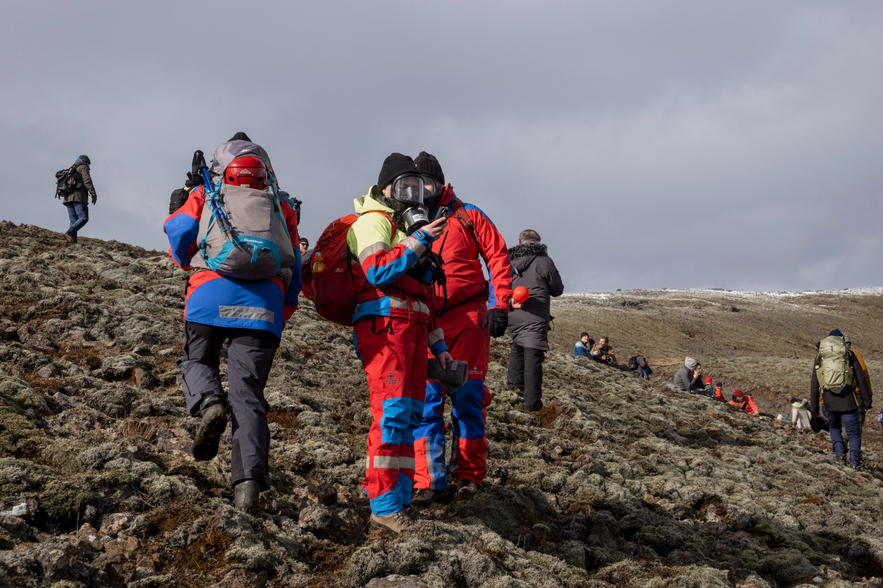
Safety Measures
Serious hazards are present when visiting or remaining in an eruption zone. Icelandic authorities closely monitor gas and dust levels and issue warnings accordingly. They continuously reassess the overall danger level and make decisions about whether to close or partially restrict access to affected areas. These warnings must be heeded. For the latest updates on volcanic activity, safety warnings, and travel conditions across Iceland, visit Safetravel.is. Having the app on your smartphone is essential for your Iceland trip.
I was surprised at how many Icelanders own gas detectors, which are standard equipment for rescue teams working near eruption sites. When these devices activate, it means it's time to put on a mask. As a first step, always move to higher ground for self-protection, as gases tend to accumulate near the ground, especially on calm days. This has repeatedly led to closures around the Fagradalsfjall eruption site. Onset of headaches can be an early sign of gas poisoning, so immediately seek higher ground if this occurs. Additionally, keeping an eye on wind direction and ensuring the wind carries eruption gases away from you is a good precaution.
Viewing at Dusk
Eruptions are particularly impressive at dusk, which is why many visitors head out in the evening and return in the dark. Even marked trails, if available, can become hazardous in the dark. Carrying a headlamp or flashlight is highly advisable.
Tip: If you're flying into Iceland, securing a window seat gives you a great chance of spotting fresh lava or even an active eruption from above on a clear day.







